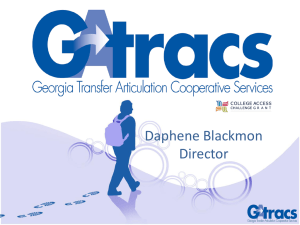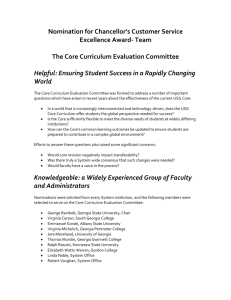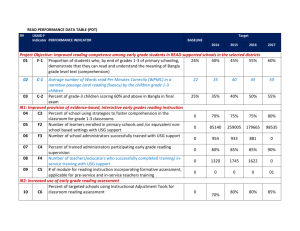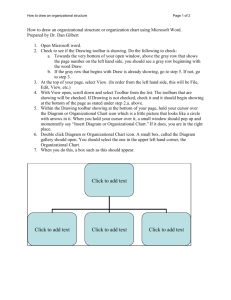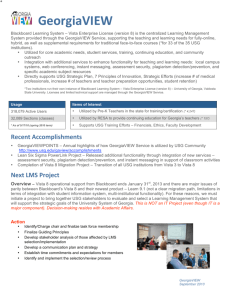Below is a sample write up on company past performance that
advertisement
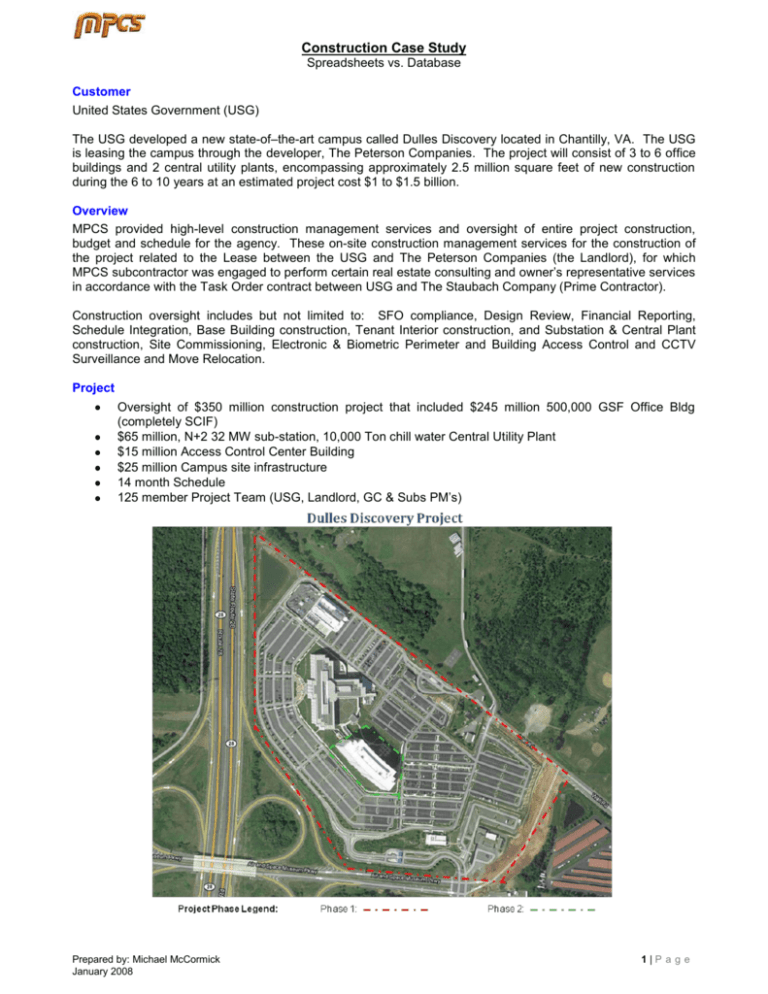
Construction Case Study Spreadsheets vs. Database Customer United States Government (USG) The USG developed a new state-of–the-art campus called Dulles Discovery located in Chantilly, VA. The USG is leasing the campus through the developer, The Peterson Companies. The project will consist of 3 to 6 office buildings and 2 central utility plants, encompassing approximately 2.5 million square feet of new construction during the 6 to 10 years at an estimated project cost $1 to $1.5 billion. Overview MPCS provided high-level construction management services and oversight of entire project construction, budget and schedule for the agency. These on-site construction management services for the construction of the project related to the Lease between the USG and The Peterson Companies (the Landlord), for which MPCS subcontractor was engaged to perform certain real estate consulting and owner’s representative services in accordance with the Task Order contract between USG and The Staubach Company (Prime Contractor). Construction oversight includes but not limited to: SFO compliance, Design Review, Financial Reporting, Schedule Integration, Base Building construction, Tenant Interior construction, and Substation & Central Plant construction, Site Commissioning, Electronic & Biometric Perimeter and Building Access Control and CCTV Surveillance and Move Relocation. Project Oversight of $350 million construction project that included $245 million 500,000 GSF Office Bldg (completely SCIF) $65 million, N+2 32 MW sub-station, 10,000 Ton chill water Central Utility Plant $15 million Access Control Center Building $25 million Campus site infrastructure 14 month Schedule 125 member Project Team (USG, Landlord, GC & Subs PM’s) Prepared by: Michael McCormick January 2008 1|P a g e Construction Case Study Spreadsheets vs. Database Risk During the initial six months, extensive (560 Field Orders) design changes by USG significantly elevated the difficulty of completing Phase 1 project by the required completion date and current budget. Approval process with USG requested significant design changes but the request of magnitude (ROM) cost impact were not being received in a timely manner form the Landlord in addition to their tracking system was inconsistent and inaccurate. USG approval process requires funds tracking which was not in place and required an amendment to the USG Lease, which is complicated and time consuming for USG to complete without further impacting the project schedule. The Landlord’s current system did not effectively track cost impact of design changes that were exceeding $60 million. Solution In an effort to efficiently track design cost changes between the USG and Landlord a simple database reporting system was developed to track all design changes (Tenant Field Orders) with dates, change description, Landlord issue number and categories, i.e. Base Building, Central Plant, Tenant Interior and Security, and the request for magnitude (ROM) cost and description. The Access 2003 database Project Issue Log (PIL) tracking system (refer to screenshot below) included tracking ROM’s, General Contractor Proposal and USG Approved price and document control. The reports provided details to each issue, status, cost (if applicable), schedule and who owned the issue and recommended action. Though the main screen is simply in design, the power of using a database far exceeds the limitations of spreadsheets. The second part to tracking the design change process was to develop an approval design and cost estimate review by the on-site MPCS Construction Manager (CM) prior to USG review and approval. This process was incorporated into the PIL database system with issues and approval review Field Order (FO) document that was submitted to USG for authorization. The FO provides a summary of the most current changes and CM validation of USG design request to submitted design documents for completeness and accuracy. This weekly reporting process reduced turn around time from 90 days to 5 days (95% reduction). To ensure timely reconciliation of FO’s and Pay Applications, change orders (CO) were processed in sequence with the construction schedule phases for Base Building, Interior Construction, Site Work, Utility Plant and Security Infrastructure. Prepared by: Michael McCormick January 2008 2|P a g e Construction Case Study Spreadsheets vs. Database This effort was simply applying “Risk Management” (RM) best practices to a “red” project by assessing the issues and implementing a risk mitigation plan and realigning the project to standard construction methodology processes. Other Notable Achievements Maintained project 14 month construction schedule with 60% project redesign and addition of $65 million utility plant. Managed $5 million Commissioning Team and successfully completed Functional Performance Testing ahead of schedule. Received the USG Achievement Coin Award for outstanding contributions and commitment to the agency’s goals and meeting the project critical completion date. Achieved multiple LEED certifications, 2-Gold and 1 Silver Conclusion When managing any type of project, using manual spreadsheets to track project activities, documents and project cost are better suited for a database or software system that has been design to track projects but more importantly, provide a snap shot (Dashboard) of the projects current status providing pro-active insight to the project’s activities, schedule and budget. Remember, project management is simply managing risk and how you pro-actively manage those risks is the determining factor in a “good” or “bad” project. Prepared by: Michael McCormick January 2008 3|P a g e
